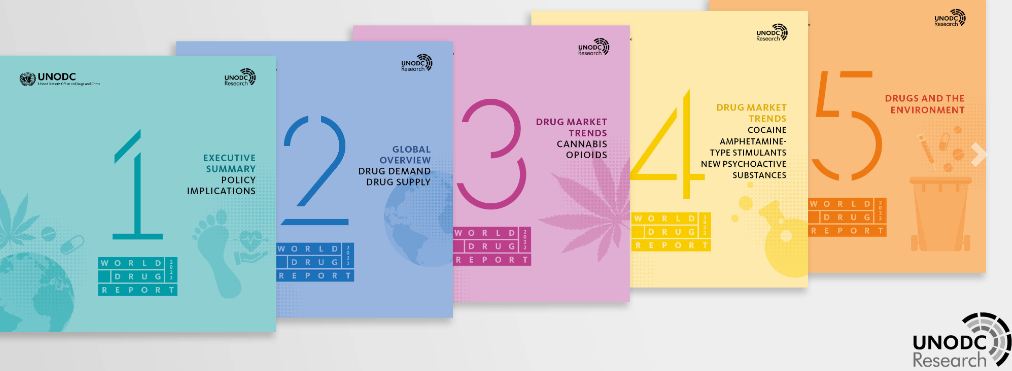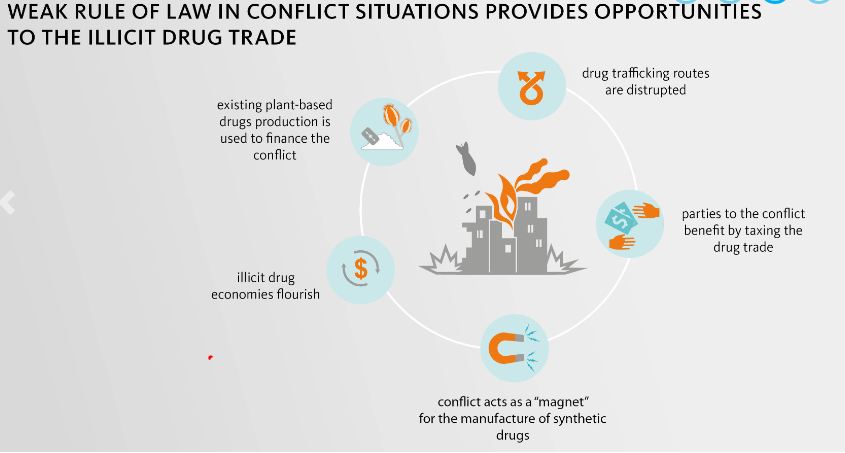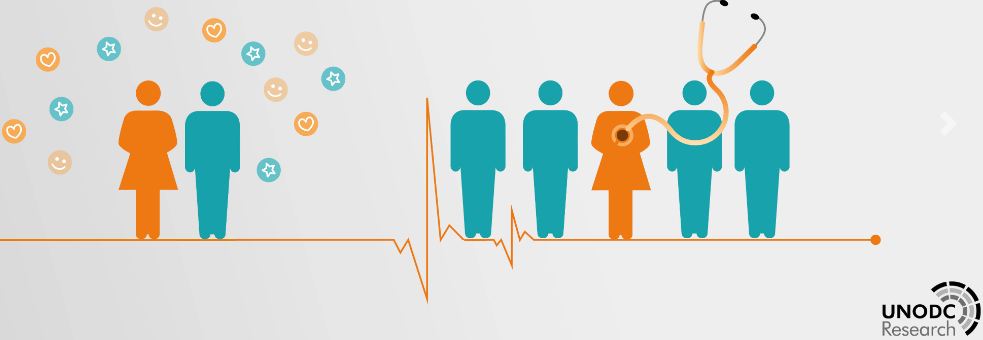27 June 2022
The World Drug Report 2022 provides an in-depth analysis of global drug markets and examines the nexus between drugs and the environment within the bigger picture of the Sustainable Development Goals, climate change and environmental sustainability.

“Numbers for the manufacturing and seizures of many illicit drugs are hitting record highs, even as global emergencies are deepening vulnerabilities,” said UNODC chief Ghada Waly.
“At the same time, misperceptions regarding the magnitude of the problem and the associated harms, are depriving people of care and treatment and driving young people towards harmful behaviours”. Legalized cannabis use in some countries and states appears to have accelerated daily use and related health impacts, the UN Office on Drugs and Crime (UNODC) revealed in a new report. It also details the environmental consequences of the illicit drugs trade, the expansion of synthetic drugs to new markets, and an all-time high in cocaine production.
Global overview
 The report outlined that some 284 million 15 to 64-year-olds used drugs in 2020, indicating a 26 per cent increase during the course of a decade. Globally, 11.2 million people were estimated to inject drugs, around half of whom were living with hepatitis C; 1.4 million with HIV, and 1.2 million with both.
The report outlined that some 284 million 15 to 64-year-olds used drugs in 2020, indicating a 26 per cent increase during the course of a decade. Globally, 11.2 million people were estimated to inject drugs, around half of whom were living with hepatitis C; 1.4 million with HIV, and 1.2 million with both.
Repercussions of cannabis legalization
In North America, legalized cannabis on a state level – especially new potent products containing elevated levels of high-inducing THC – appears to have increased daily usage, particularly among young adults.
It has also caused a reported surge among people with psychiatric disorders, increased suicides and hospitalizations while generally reducing possession arrests.
Cocaine, meth and opium

In 2020, global cocaine manufacturing grew 11 per cent from the previous year to 1,982 tons and, despite the COVID-19 pandemic, seizures increased to a record 1,424 tons. Methamphetamine (or meth) trafficking continued to expand geographically, with 117 countries reporting seizures with volume growing an astonishing five-fold, between 2010 and 2020. While the global area being used for opium poppy cultivation fell globally by 16 per cent to 246,800 hectares between 2020 and 2021, increased Afghan production triggered a seven per cent jump to 7,930 tons during that period.
Conflict zone magnets
 Historically, parties to conflict have often used illegal drug profits to finance war.
Historically, parties to conflict have often used illegal drug profits to finance war.
Conflicts may also disrupt and shift drug trafficking routes, as has happened in the Balkans and most recently in Ukraine, since Russia annexed Crimea and separatists took control of areas of the east in 2014. Reported clandestine laboratories in Ukraine have skyrocketed from 17 dismantled in 2019, to 79 in 2020 – 67 of which were producing amphetamines – the highest number of disassembled labs reported in any given country, in 2020.
Environmental impacts

The carbon footprint of indoor cannabis is between 16 and 100 times greater, than for outdoor cannabis, on average, according to the report – due to the intensive energy demands of artificial cultivation. And it is 30 times greater for lab-produced cocaine, than that for cocoa bean production. Other environmental impacts include substantial deforestation associated with illicit coca cultivation; waste generated during synthetic drug manufacturing, which can be 5-30 times the volume of the end product; and dumping other waste that can affect soil, water and air directly.
Gender treatment gap
The women use an estimated 45-49 per cent of amphetamine and non-medical pharmaceutical stimulants, pharmaceutical opioids, sedatives, and tranquilizers.

And although women represent almost one in two amphetamines users, they constitute only one in five people in treatment for amphetamine use. “We need to devote the necessary resources and attention to addressing every aspect of the world drug problem, including the provision of evidence-based care to all who need it, and we need to improve the knowledge base on how illicit drugs relate to other urgent challenges, such as conflicts and environmental degradation,” said UNODC chief Ghada Waly.
More data on: https://www.unodc.org/unodc/data-and-analysis/world-drug-report-2022.html https://news.un.org/en/story/2022/06/1121472
oOo
Thank you for reading!


